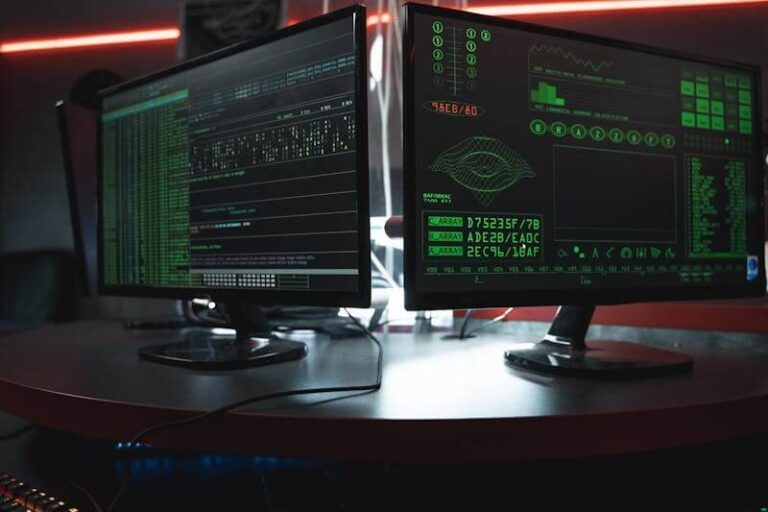Defending against digital threats isn’t what it used to be. Today’s attackers are quick, adaptive, and often work across multiple targets at once. It’s no longer enough for one team to guard their own network and call it a day. The rules have changed, and the tools need to catch up.
That’s where smart systems come in. These tools bring together automation, shared platforms, and real-time response to help teams work together, not just faster—but smarter. Whether you’re part of a security team, tech department, or company leadership, understanding how these systems improve coordination is key. Let’s take a look at five ways smart systems are transforming digital defense.
Breaking Down Silos with Real-Time Data Sharing
One common challenge is that teams often work with limited visibility. When departments use different platforms or don’t communicate regularly, it slows down the flow of information. That creates gaps, delays, and confusion when it matters most.
Smart systems are changing that. By connecting tools and making alerts visible across teams and platforms, everyone gets the same real-time information. This helps reduce response time, avoids duplication, and keeps everyone on the same page.
Strengthening Defense Through Shared Intelligence
No single organization sees everything. Threats spread quickly and often hit multiple targets. That’s why working together is no longer optional—it’s essential. Teams must share insights and coordinate across industries to stop attacks early.
That’s the idea behind collective defense. It encourages companies, agencies, and teams to share threat data and respond as a unified front. This model helps participants detect attacks faster, minimize damage, and better protect themselves and others.
AI-Driven Threat Detection and Response
When teams are flooded with alerts, important signals can be missed. Artificial intelligence helps by scanning large volumes of activity and recognizing unusual patterns that humans might overlook.
AI systems get smarter over time, learning from each incident. They highlight risks, rank them by urgency, and recommend next steps. This leads to faster, more accurate responses and lets human analysts focus on what matters most.
Automated Playbooks for Coordinated Action
Knowing what to do in a crisis is only part of the solution—responding swiftly and accurately is equally crucial. Smart systems enable automated playbooks that initiate pre-defined actions the moment specific triggers are detected.
These playbooks eliminate uncertainty by guiding teams through each step or executing tasks automatically. This structured, consistent response reduces confusion, accelerates reaction times, and minimizes delays when every second matters. With automated coordination, teams can focus on what truly requires human judgment, ensuring faster, more effective responses during high-pressure situations.
Smarter Alerts, Less Noise
Not every alert deserves attention. Too many low-priority warnings can overwhelm teams, leading to slower responses and alert fatigue. Smarter systems improve efficiency by filtering out the noise and highlighting only the most critical threats.
This reduces distractions and helps teams stay focused, energized, and ready to act quickly when real danger arises. It’s not about increasing the number of alerts—it’s about delivering the right alerts at the right time. With smart filtering, organizations can enhance security and performance without sacrificing clarity or urgency.
Secure Collaboration Across Borders
Security doesn’t stop at the firewall. Many teams today are working remotely or across different locations. That can make collaboration harder, especially when dealing with sensitive information. Smart systems help by enabling secure, real-time communication between teams—no matter where they’re located.
Encrypted platforms, access controls, and automated monitoring help ensure that people only see what they need to. This kind of secure setup allows teams to work together without worrying about leaks, breaches, or delays due to manual sharing.
Adaptive Learning from Real-World Attacks
The digital threat landscape is always changing. What worked yesterday might not be enough today. That’s why smart systems are built to learn as they go. They gather data from actual incidents and adjust their rules, alerts, and responses accordingly.
This ongoing learning means systems don’t just react—they improve. The more they encounter, the better they get at spotting patterns and suggesting effective solutions. This continuous improvement helps teams stay ready for what’s next, not just what’s already happened.
Cloud-Native Platforms for Scalable Security
As companies grow or shift operations, they need systems that grow with them. Cloud-native platforms make it easy to scale up or down without major overhauls. These platforms allow security tools to run from anywhere, on any device, with minimal setup.
Smart systems built on cloud infrastructure update automatically and adjust to new workloads quickly. That means no long wait times for deployment, no bulky on-site tools, and better support for fast-moving teams or growing organizations.
Zero Trust Architecture Made Simpler
Zero Trust is all about verifying every action—no more assuming that access equals safety. However, applying this model manually is complex. Smart systems help by automating identity checks, access controls, and real-time monitoring of behavior.
This automation helps keep data safe without slowing people down. It checks every login, flags unusual activity, and limits access based on actual need. That way, even if someone gets inside, they can’t move freely across systems unnoticed.
Fostering a Culture of Shared Responsibility
Smart systems can do a lot—but they’re most effective when everyone plays their part. Encouraging all team members—not just tech experts—to understand basic security practices makes a big difference. It creates a culture where security is seen as a shared goal. With the help of smart systems, non-technical users get alerts, tips, and reminders in ways that are easy to follow. This builds awareness and makes the whole team part of the protection plan.
Smart systems aren’t just changing how security is managed and how teams work together. From filtering alerts to sharing intelligence, these tools make acting fast, learning quickly, and collaborating easier. The shift toward automation, real-time data, and shared response is already reshaping digital defense. And with the right tools in place, any organization—big or small—can stay prepared, connected, and one step ahead.


